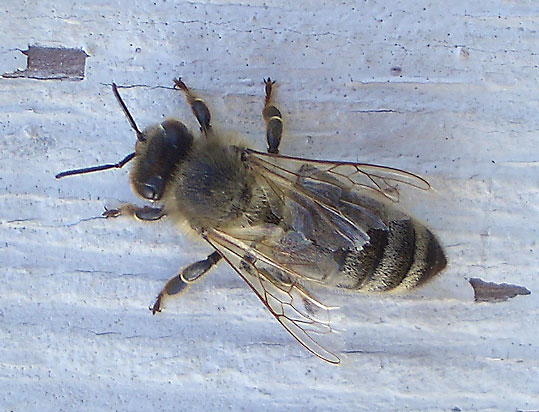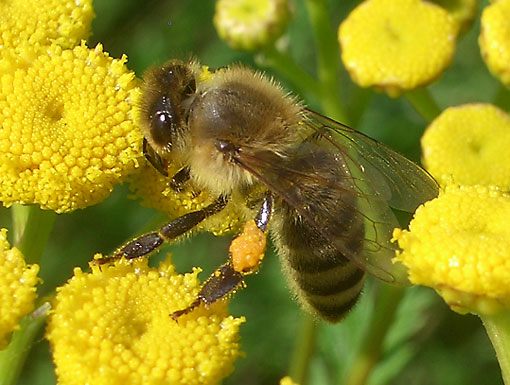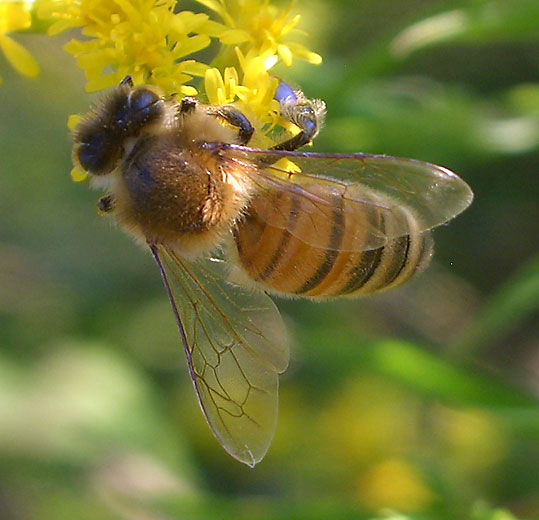 |
||||
Apis mellifera Honeybee Honigbiene |
||||
|
Subspecies
Original description Synonyms Identification Distribution Biology The honeybee is famous for its eusociality. A bee colony consists of a single queen and up to 80 000 workers. The workers are females, but do not produce eggs because their ovaries are not developed. This is due to an inhibitory hormone that is produced in the queen´s mandibular gland. Males only occur during a short period of time and develop from unfertilized eggs. They therefore only inherit the chromosome set of their mother, the queen, and are thus haploid. The life cycle of the honeybee is quite complex. The queen can live for up to 5 years. It overwinters together with its workers. The queen produces up to 1500 egg per day. Most of these eggs give rise to new workers that only live for up to six weeks. They build the nest and supply the queen with special food that they produce from pollen by enzymes in their hypopharyngeal glands (bee´s milk or royal jelly). They also use the milk to feed the larvae during their first days of development. After that, most larvae are then fed with fresh pollen and honey. Only those larvae that are destined to become new queens are exclusively fed with royal jelly during their entire development. These larvae are produced in late spring and are placed in separate combs, the queen cells. At the same time the queen produces a number of unfertilized eggs (up to several hundred) that will become males (drones). Shortly before the new queens and the drones hatch from their cells, the old queen and about half of the colony swarm and search for a place to start a new colony. The first of the new queens kills all of her sisters, mates with the available drones and then takes over the remaining rest of the old colony. The drones die shortly after mating. Search the References Database > |
 Specimen photographed in München (Bayern) on June 26, 2005.  Specimen photographed in Göttingen (Niedersachsen) on August 5, 2007.  Specimen of the "Buckfast" race. Specimen photographed in Göttingen (Niedersachsen) on August 30, 2008. |
|||
|
Home | Site tutorial & Help | Links | Citation | Terms & Conditions | Disclaimer | Contact |
||||
| This
page has been updated on June 11, 2013 This site is online since May 31, 2005 Copyright © by Nikola-Michael Prpic-Schäper. All rights reserved.  |
||||